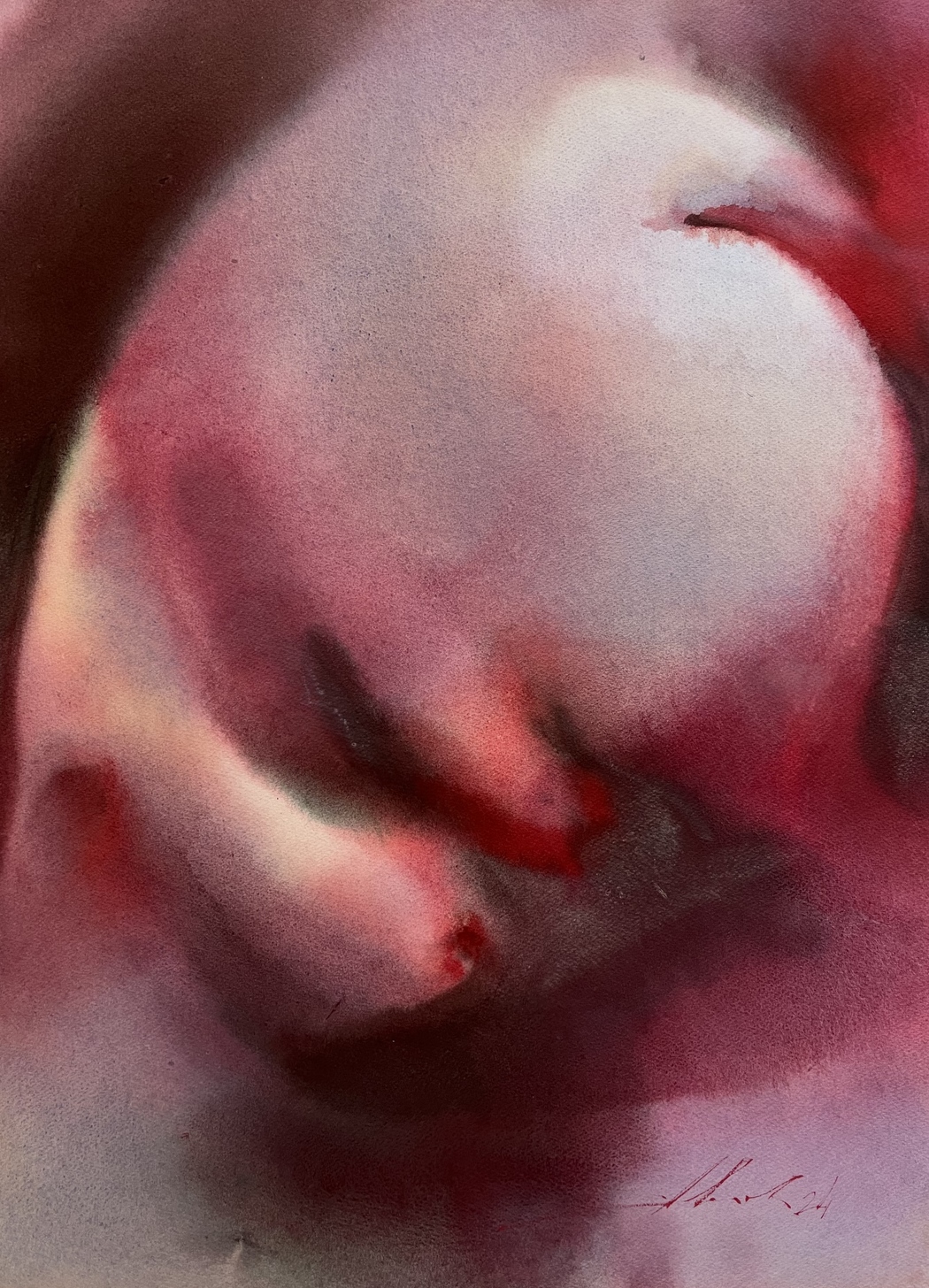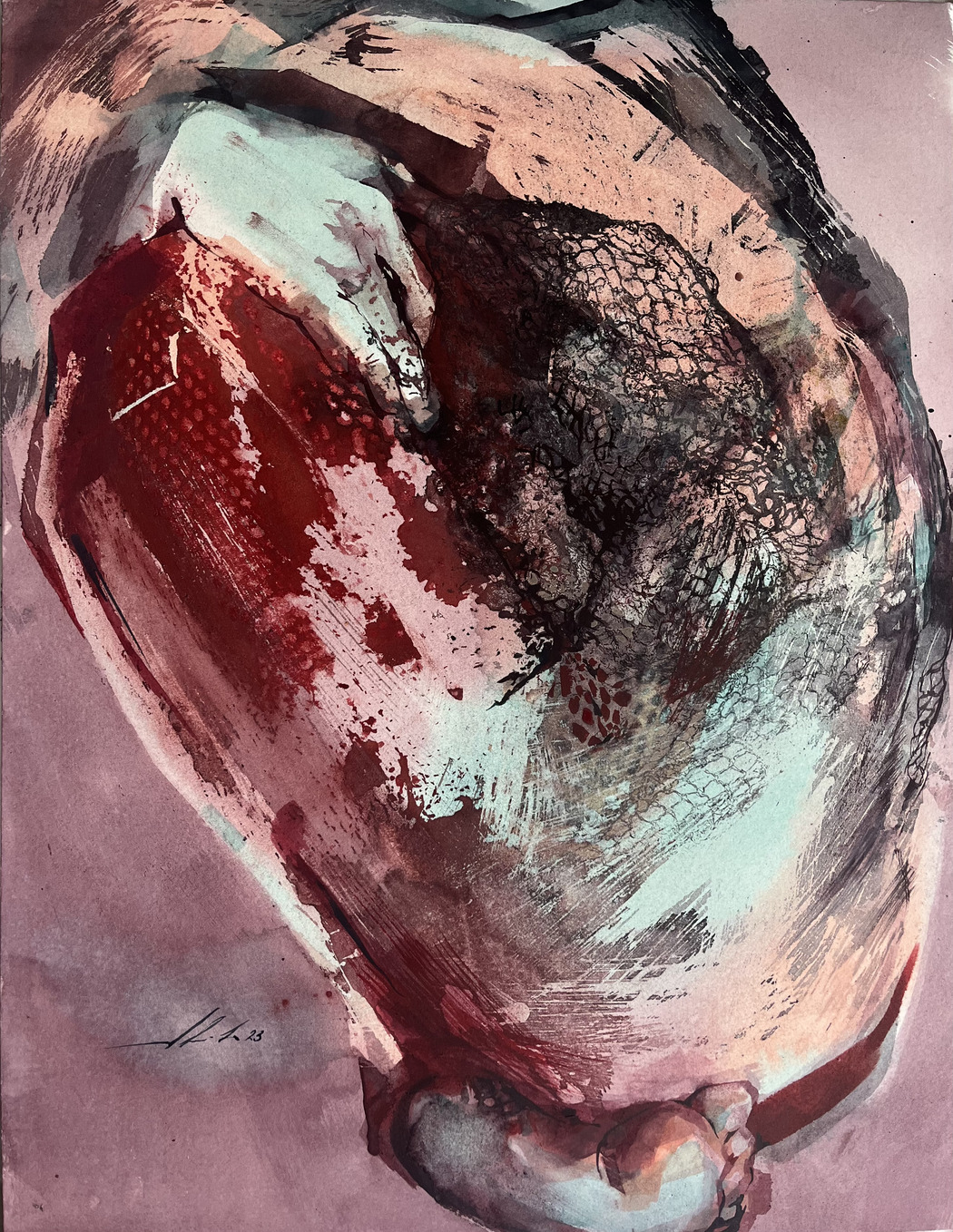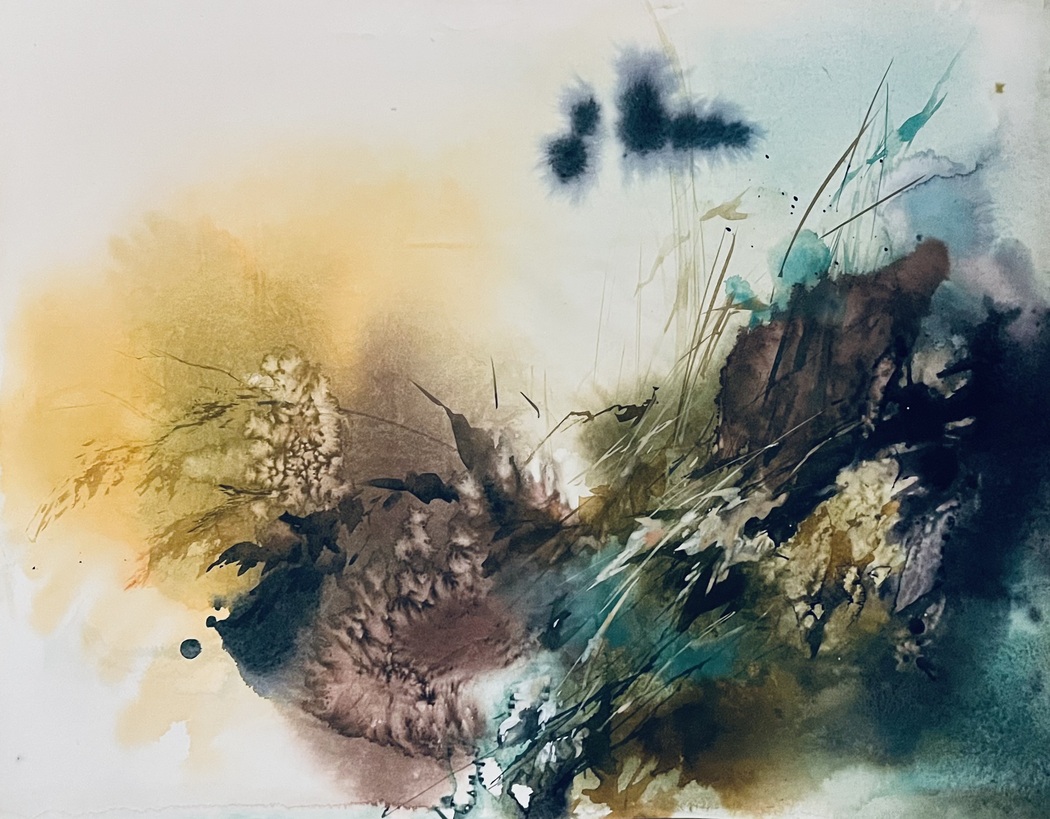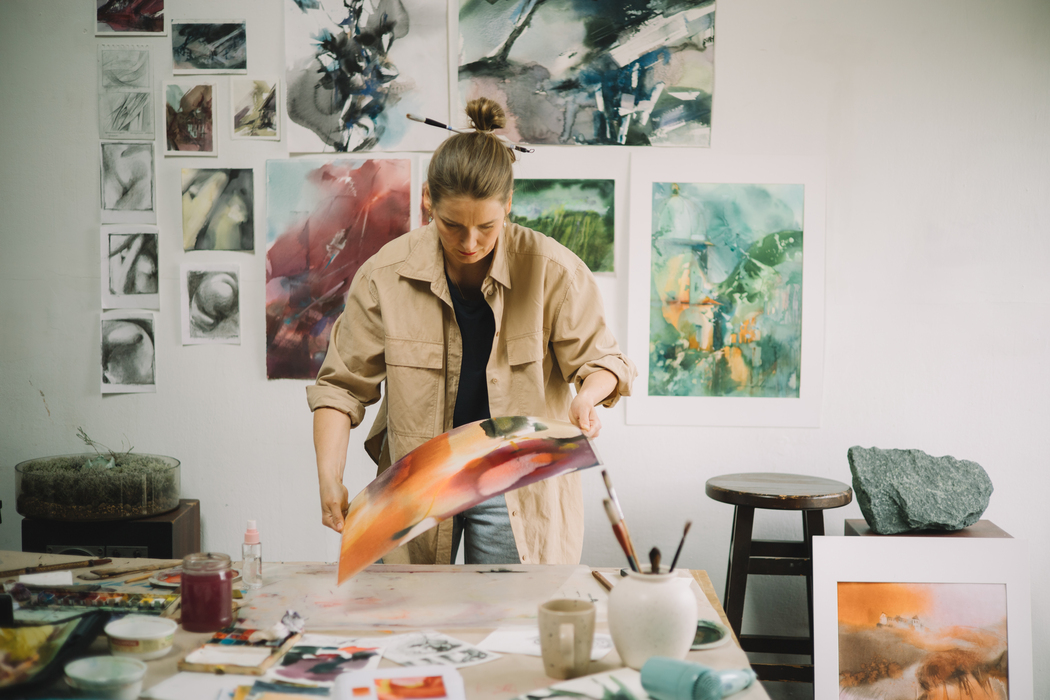Natalia Averianova
Can you tell us more about the process of creating your watercolor works? How does the medium allow you to express emotion and meaning?
I’m in love with watercolor because of its spontaneity. That’s why I work on large sheets of paper it gives the paint space to open its full delicacy and beauty. Watercolor has a unique nature, with effects that I appreciate, even the ones that might seem like mistakes at first glance. I do experiment out of traditional techniques, opening up a world of freedom, spontaneity, acceptance, and things left unsaid. It’s this sense of “leaving things unsaid” and the imagery in my paintings that invites viewers to interpret the story through their own personal associations, connecting into their deeper perceptions.
How has your background in fashion and textile design influenced your approach to watercolor and your artistic expression?
My time studying the Italian school of elegance and trends shaped me into an aesthete with a conceptual mindset. Whether in fashion or painting, I pay close attention to lines, proportions, plasticity, and details. These elements are key to create a visual message. Color scheme is a separate exploration for me. I carefully plan the palette for each painting, testing swatches to find the most impressive and delicious combinations. It’s a process similar to designing a clothing collection.
 Natalia Averianova | Embryo | 2024
Natalia Averianova | Embryo | 2024
You mention the concept of vulnerability in your artist statement. How do you translate this vulnerability into your visual work?
Every artist is vulnerable in their openness. For me, that vulnerability is about accepting my imperfections loving my weaknesses and accepting processes I can’t fully control. An artist can’t claim to hold the ultimate truth, but through sensitivity and raw vulnerability, they touch the unknown and infinite. Through my art, I share sophisticated layers of life with the world. Take my series *Metamorphoses of My Ego* as an example. It’s a personal exploration of the inner shifts in a woman’s mind and body during motherhood. This isn’t a polished, idealized version of motherhood it’s an honest portrayal of the complex emotions and challenges a woman faces. The paintings reflect a sense of losing parts of your body, time, freedom, and ordinary way of life. There are themes of fragility, despair, and the urge to escape responsibility. These works are traces of a crisis, marking a transformation from “me for myself” to “me for others.”
Your works are described as having both sensuality and meaning. How do you balance these two elements in your art?
The balance occurs naturally. It starts with an impression. Then I sketch capturing moments from my inner world or the world around me. Once I feel I’ve caught something valuable, I begin the painting. I’m a visual poet, and I use watercolor because its fluidity and unpredictable effects beautifully capture the subjective, elusive nature of emotions. At first, I work intuitively pouring paint and letting my feelings guide what happens on the paper. Then I observe the shapes that emerge, checking if they align with my original idea. I refine details, balance the composition, and layer in deeper meaning. This journey from spontaneity to emotion to intent fills the painting with allegories and significance.
 Natalia Averianova | The unseen mother | 2023
Natalia Averianova | The unseen mother | 2023
Could you elaborate on how you see the relationship between watercolors’ spontaneous nature and your desire to convey deep emotional themes?
Watercolor’s spontaneity comes from the interplay of water, air, and pigment an uncontrollable process, like a higher force at work. You have to let go of the ego’s need for total control and appreciate the unexpected outcomes. This act of acceptance, of loving what’s given, naturally brings out subtle connections, depths of the subconscious, and emotional themes on the paper.
How do you perceive the role of everyday beauty in your work? Is there a particular scene or moment from everyday life that inspired one of your pieces?
Inspiration can come from the most ordinary things like a banana peel. It’s lying on the table after one of my kids ate the fruit and left it behind. I pick up charcoal and start tracing its lines, studying the grace of its curves. The lines twist and dance, and soon I sense the theme of a future painting. As I explore, I realize the peel is just the shell of the banana. Sure, it has its own aesthetic charm, but the real value is inside. This sparked an idea for a painting where the banana peel becomes a metaphor for how outward appearances often overshadow inner substance. In today’s world of social media and beauty culture, looks can matter more than what’s beneath. The painting shows just the peel, but your eye is drawn to a spreading yellow stain a symbol of the soft, deep, boundless essence hidden behind the surface.
 Natalia Averianova | When the snow melts | 2023
Natalia Averianova | When the snow melts | 2023
You’ve had a significant influence from your teacher, Vladimir Rynkevich. What aspects of his work shaped your approach to watercolor, and how do you incorporate those influences into your art today?
You’re right Vladimir Rynkevich, my teacher, deeply influenced my watercolor practice. It’s not just about specific techniques, though I do use his masterful tricks like imprints, drips, layering, and scratching his own creative inventions. More importantly, his lessons went beyond that. He taught me to cultivate an authentic, personal voice, to build a cohesive visual story, and to harmonize the emotional message in my work. Those principles are the foundation of my approach to art today.


Leave a Reply